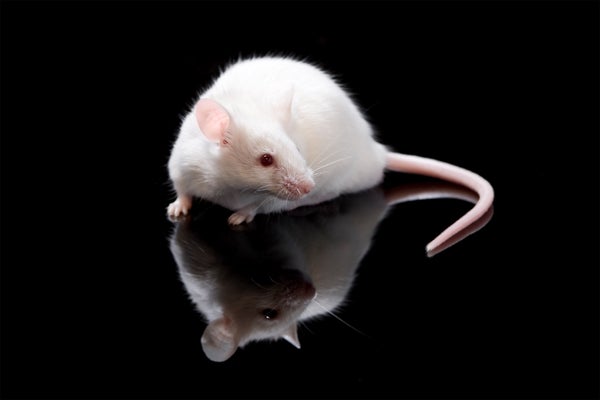Rat Neurons Repair Mouse Brains That Lack a Sense of Smell
With an injection of rat cells, mouse brains that were genetically engineered to be unable to smell could detect odors and even track down an Oreo cookie stash
Chimeras, fictional creatures made up of a combination of body parts from different animals, such as the mythological Minotaur, have captivated thinkers, philosophers and scientists throughout history. In biology, a chimera is any organism made up of cells with different sets of genes. Now researchers have created a unique variety of chimeras in the form of mice with rat neurons that replace lost brain functions. The chimeric mice highlight the adaptability of the brain and raise hopes for studying neurological disease and for developing brain tissues that more closely resemble those of humans for transplantation.
The findings, reported in two studies in Cell this week, show that rat neurons can integrate into mouse brains and develop into missing circuits using a procedure called interspecies blastocyst complementation (IBC) in which researchers inject cells from one species into embryos of another and then implant the embryos into animals of their own species. Researchers had previously used this technique to develop a pancreas and kidneys in mice and rats but not brain tissue.
The new work is “a big step in the field,” says Andrew Crane, a cell biologist at the University of Minnesota, who was not involved with the two papers. “Both of these studies are answering key questions about how rat cells develop within a mouse.”
On supporting science journalism
If you’re enjoying this article, consider supporting our award-winning journalism by subscribing. By purchasing a subscription you are helping to ensure the future of impactful stories about the discoveries and ideas shaping our world today.
One of the studies, conducted by Jun Wu of University of Texas Southwestern Medical Center and his colleagues, first sought to
Read the full article here







